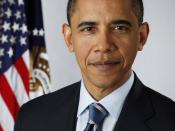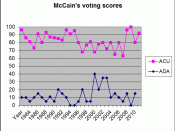What does it mean to be an American? Many would attribute being an American to democracy, freedom, and most of all, patriotism. America is seen as a unique country that is not founded on ethnicity, but on a set of ideas (574). Those set of ideas must be learned, not inherited, by our next generation and the waves of new immigrants that arrives on our soil every day. The children of today will one day be the people of tomorrow. If they do not learn the basic foundations that our country is built upon on, then they will never learn what the meaning of patriotism is. This is why Plato once stated that ÃÂthe fundamental task of any regime is the education of the young. A nation cannot survive if its young are not intellectually and morally prepared to defend it.ÃÂ (Bennet) After the September 11 attacks, Americans have shown an increase in patriotism comparable to the oneÃÂs seen after the Pearl Harbor attacks.
The acts of Patriotism expressed on that day dates back to when America was being founded.
During the revolutionary war, Americans sacrificed everything they had for the birth of their new country. They battled night and day for the creation of a free country without the imposing rules of the British Empire. However, modern patriotism does not require oneself to give up all of his individual loyalties, and unlike many people think, American patriotism as a whole is reinforced by those smaller loyalties. But in modern times, pursuit of materialistic items rather than social unity has become the link that bonds society together. This self-interested pursuit is caused by the steadily growing influence of political, economic, legal, technological and social forces. ÃÂPatriotism is another way of saying service to a cause greater than self-interest.ÃÂ(McCain) American patriotism is just as the same as the common patriotism seen everywhere else. Their loyalties to their country remain the same while their ideals remain dissimilar.
The problem with todayÃÂs America is that Americans are losing their national identity. With each generation, Americans are becoming less and less aware of what an American stands for. When asked who the Speaker of the House is, six percent of Americans answered correctly, but when asked who Regis Philbin was, sixty-six percent was able to recognize him as a television host (571). Being an American requires oneself to contribute to the country for the good of the whole and to also be educated in the countryÃÂs contributions. Many Americans today fail to realize the power they hold within themselves, the right to vote. They argue over many issues but only a few has had the will to take action. ÃÂIf you find faults with our country, make it a better one. If you are disappointed with the mistakes of government, join its ranks and work to correct them.ÃÂ (McCain) The reason why many AmericanÃÂs fail to vote is because of the preparation needed to cast an intelligent ballot, which requires more than just viewing campaign commercials (571). Many Americans are not up to the task of educating themselves on the candidates and their views mainly due to degree of difficulty to complete that task; to inform oneself about the candidates is just as hard if no more than an upper-division college class. However, in the end, what America needs is not more voters, but informed ones.
Balzar, John. ÃÂNeeded: Informed Voters.ÃÂ The Informed Argument. 7th ed. Ed. Robert K. Miller. Boston: Thomson Wadsworth, 2007. 570-74.
Bennett, William J. "A Nation Worth Defending" USA Today Magazine 131.3 (Nov.
2002): 10. MAS Ultra - School Edition. EBSCO. Lakeside High School Media Center, Evans, GA. 17 Jan. 2009 .
McCain, John, and Barack Obama. ÃÂPatriot Games.ÃÂ Times Magazine (Jul. 2008): 7. MAS Ultra ÃÂ SchoolEdition. SIRS Researcher. Lakeside High School Media Center, Evans, GA. 17 Jan. 2009 McClay, Wilfred M. ÃÂAmerica, Idea or Nation?ÃÂ The Informed Argument. 7th ed. Ed. Robert K. Miller. Boston: Thomson Wadsworth, 2007. 575-81





